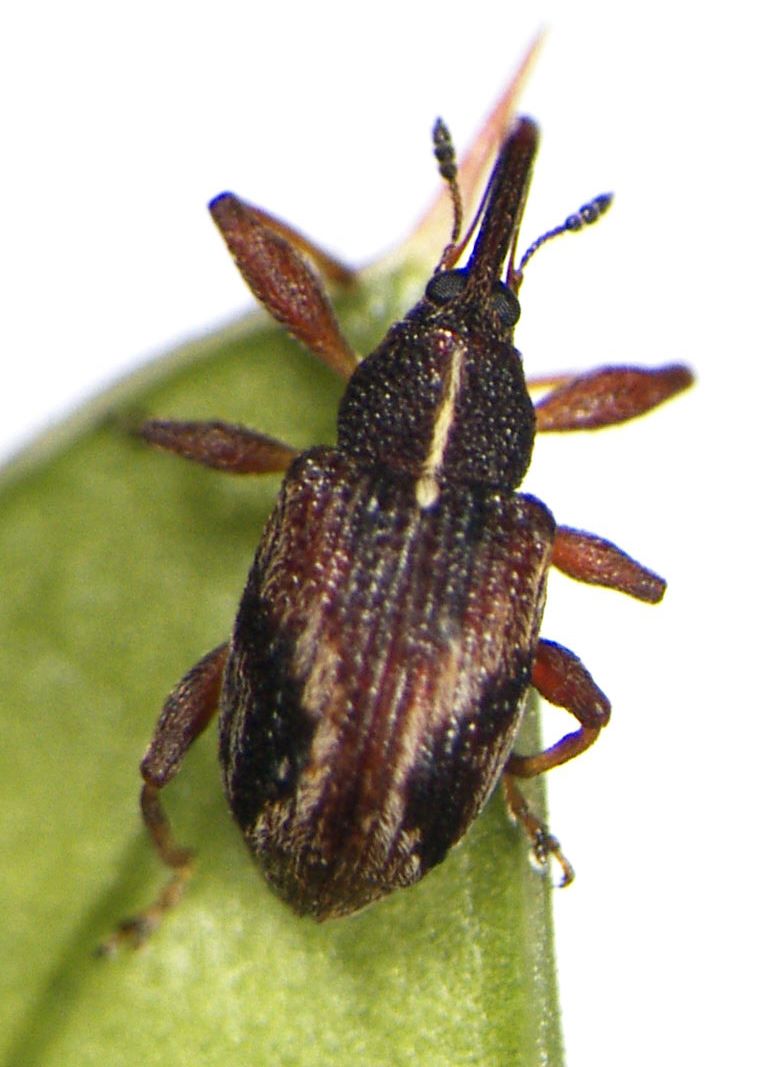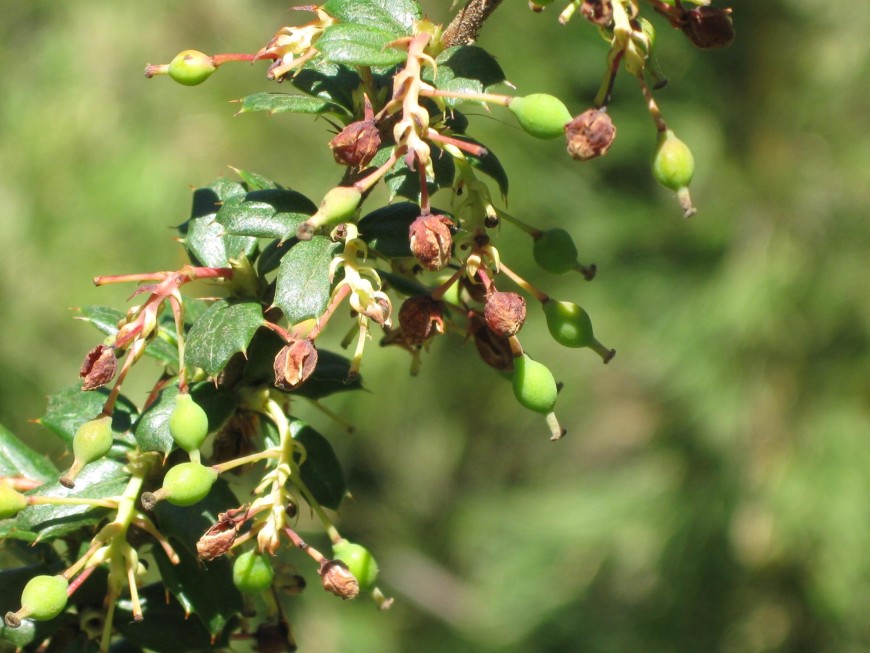Darwin's barberry flower weevil
History in New Zealand
The Darwin’s barberry flower weevil is native to central and southern Chile. It was first imported from Chile by Manaaki Whenua - Landcare Research into containment to complete safety testing in 2012. Permission to release this weevil was granted by the EPA late in 2012, however no releases have been made as efforts were focused on establishing the Darwin’s barberry seed weevil first. Neither weevil has been used as a biocontrol agent anywhere in the world before.
See Darwin’s barberry seed weevil.
How would I find/recognise them and what is their lifecycle?
Look in the spring when the adults emerge from overwintering and begin to damage the flowers. The adults are capable of significantly damaging both flower buds and open flowers. Adults may also be seen feeding on new growth or resting in leaf axils and shoots during the warmer months but are likely to be difficult to spot given their small size and cryptic colouration. Adults are only 3–4 mm long and females are usually slightly larger than males. Adults are reddish-brown in colour with darker patches and a white stripe down the side of each wing case and down the back of the head and thorax. However, given the small size of the weevils these details will be difficult to see without magnification. The best way to find adults will likely be by tapping flowering barberry plants over a piece of white cardboard or material and looking to see if you have dislodged any.

Image: Darwin's barberry flower weevil (Anthonomus kuscheli).
Females lay eggs into the newly developing flower buds, generally one egg per flower. The eggs hatch into pale-coloured larvae which complete their development within a single bud, feeding on its contents before forming a pupation capsule inside the hollowed out bud. You can clearly distinguish damaged buds from those that have not been attacked as they remain closed as well as looking dried out.
Image: Darwin's barberry flower weevil egg.
New adults emerge from the pupae about a week later but will not breed and produce offspring until the following spring. Development from egg to adult can occur in as little as 6 weeks at warm temperatures. The adults are long-lived and so the females can lay eggs over many weeks to cover the whole flowering period.
The only other weevil on Darwin’s barberry that you are likely to confuse with the flower weevil is the Darwin’s barberry seed weevil, which is a similar size but darker in colour, and attacks the fruits not the flowers.
How do they damage Darwin’s barberry?
Adults feed on the flowers, flower buds and new leaves. But the most significant damage is caused by the larvae which each consume the entire contents of a single flower bud, rendering it sterile with no seeds produced.
Image: damaged flower bud.

Image: flower buds damaged by Darwin's barberry flower weevil larvae.
Will they attack other plants?
As well as Darwin’s barberry, it is likely to attack barberry (Berberis glaucocarpa), and it is possible that some other very closely-related ornamental species (such as B. thunbergii) may be attacked to a lesser degree. It is highly unlikely that any species other than Berberis will be attacked.
How effective are they?
We do not know what impact the flower weevil will have here, but laboratory studies and field observations in Chile have shown that they can be extremely damaging to Darwin’s barberry. Few parasitoids that are likely to attack the weevil are believed to occur in New Zealand. The flower weevil’s impact should complement damage caused by the seed weevil to reduce the spread of Darwin’s barberry.

Image: flower buds damaged by Darwin's barberry flower weevil.
How can I get the most out of this agent?
If the weevil establishes at initial release sites, it would be worth helping to establish them in all areas where they are needed. The adults can fly and will disperse over time but helping to shift them about will speed up the process.
How do I select a release site?
Read Guidelines for selecting release sites for biocontrol agents.
How do I collect them for release at other sites?
In the spring, beat Darwin’s barberry plants, especially the flowers, with a stick over a beating tray (or a large piece of white material or cardboard) and collect any weevils that have been dislodged with a pooter attached to a compressor. You should aim to shift at least 100 weevils to each new site. Put the weevils into a suitable container and then simply tip the contents out over Darwin’s barberry bushes at the new site.
How do I manage the release sites?
Avoid any activities that will interfere with the weevils, such as herbicide application. If you need to undertake control measures, then avoid the release site.
